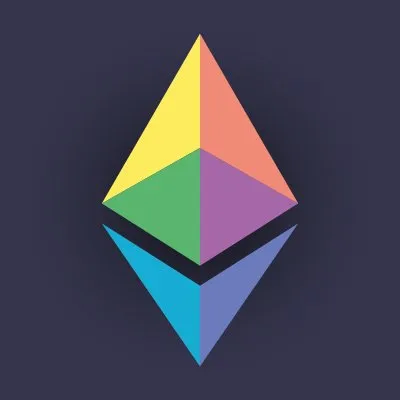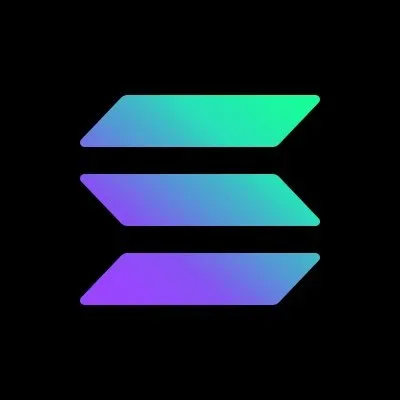[ad_1]
Non-EVM networks, like Solana, have rocketed to the forefront of the crypto industry’s consciousness in recent months as potential  Ethereum L1Ethereum is a global platform for decentralized applications and finance.View Profile” class=”stubHighlight”>Ethereum killers, but even Ethereum’s staunchest haters can’t deny the robust network effects that the chain’s virtual machine has established: EVM chains control 93% of all TVL
Ethereum L1Ethereum is a global platform for decentralized applications and finance.View Profile” class=”stubHighlight”>Ethereum killers, but even Ethereum’s staunchest haters can’t deny the robust network effects that the chain’s virtual machine has established: EVM chains control 93% of all TVL 
Many of Ethereum’s critics hold valid concerns about its rollup-centric roadmap, which tends to fracture liquidity and complicate the user experience. Instead, they advocate for a monolithic scaling approach that unifies the network into a single global state.
While some Ethereum forks, such as BNB, have alleviated the need for rollups and addressed the limitations of the EVM’s scalability by adopting more centralized consensus mechanisms, like proof-of-authority, the fact remains that the future of finance will not be developed on centralized chains.
For a blockchain to have a legitimate shot at being the next Ethereum killer, it must meet users and developers where they exist today while providing major improvements from a technical perspective on the archaic EVM and retaining strong decentralization properties.
![]() Monad L1Monad is a project parallelizing the EVM for Ethereums ecosystem.View Profile” class=”stubHighlight”>Monad is one of the most promising chains that fits this bill. Today, we’re overviewing what Monad brings to the table and discussing why the chain has a legitimate shot at displacing Ethereum as crypto’s dominant smart contract platform
Monad L1Monad is a project parallelizing the EVM for Ethereums ecosystem.View Profile” class=”stubHighlight”>Monad is one of the most promising chains that fits this bill. Today, we’re overviewing what Monad brings to the table and discussing why the chain has a legitimate shot at displacing Ethereum as crypto’s dominant smart contract platform
What Are Monad’s Key Technical Innovations?
Monad retains full EVM compatibility but improves on Ethereum with four key innovations: MonadBFT, Deferred Execution, Parallel Execution, and MonadDb.
Each represents an optimization to Ethereum, and when combined, the end result is a sufficiently decentralized blockchain with Ethereum bytecode compatibility that can execute up to 10k transactions per second with 1-second block times and single slot finality
2024 Crypto Metas on Bankless
6 metas that may dominate crypto in 2024!

 MonadBFT
MonadBFT
MonadBFT is the chain’s high-performance consensus mechanism and a modified version of HotStuff that reduces the required two rounds of communications between validating nodes and a block’s leader instead of three.
To reach consensus on a new block, Monad’s block leader will send proof that the previous block was valid (or timed out) to the network’s validating nodes, who can then approve the block by sending a signed “yes” vote directly to the leader of the next block to start the process over.
Should the leader time out in the event that validating nodes are unable to come to consensus, Monad will fall back to quadratic communication, a much more time-intensive alternative that requires intercommunication between all validating nodes.
 Deferred Execution
Deferred Execution
In Ethereum, transactions must be executed before the network can come to consensus and agree on the list of transactions included in the block and the state of the network.
This paradigm reserves very little time to execute transactions in a given block, as the majority of the block time is reserved for the multiple rounds of cross-globe communication required for the network to reach consensus.
Through deferred execution, Monad decouples execution from consensus, allowing the chain to come to agree on the state prior to knowing whether all transactions in the block were executed, enabling execution to occur throughout the entirety of the block!
Deferred Execution
Execution is not a prereq for consensus, so full block time is spent on both processes in parallel
Tx order is agreed upon, so execution outcome is deterministic and nodes reach the same final state
Monad leverages this to introduce:
Parallel execution pic.twitter.com/ZL7xc3jEIa
— intern (@intern) September 27, 2023
 Parallel Execution
Parallel Execution
Existing EVM blockchains must execute transactions in sequence (i.e., one after the next), while chains that can execute transactions in parallel, like Solana, can simultaneously process multiple transactions that do not have common dependencies, increasing their speeds!
Blockchains that can process transactions in parallel make the most of modern computing technology by allowing their virtual machines to operate on multiple cores and threads of a validator’s CPU.
To execute transactions in parallel, however, a blockchain must first identify which transactions can be executed independently of each other.  Solana L1Solana is a high-performance blockchain for fast and affordable transactions.View Profile” class=”stubHighlight”>Solana solves this issue by requiring transactions to specify the state that they access during this execution, but doing so necessitated the creation of a novel virtual machine.
Solana L1Solana is a high-performance blockchain for fast and affordable transactions.View Profile” class=”stubHighlight”>Solana solves this issue by requiring transactions to specify the state that they access during this execution, but doing so necessitated the creation of a novel virtual machine.
Instead of requiring transactions to declare state dependencies, Monad optimistically assumes that every transaction can be executed simultaneously and attempts to do so in parallel. When a transaction conflicts the first time around, it is re-run a second time with updated data, ensuring its execution.
Monad employs a static code analyzer to predict which transactions have dependencies with each other to avoid wasting time attempting to execute transactions with prerequisite transactions.
 MonadDb
MonadDb
Ethereum’s clients use a different database design than Ethereum itself, resulting in a suboptimal storage solution where one data structure is embedded into another data structure of a different type that does not support data rewrites while communication about data is in progress.
Because Monad executes transactions in parallel, multiple transactions need to be able to read from and write to the database simultaneously. MonadDb, the chain’s custom database for storing its state, enables just this, providing high-performance, asynchronous state access that allows the benefits of parallelization to shine through!
Monad is probably best known for its Parallel EVM. However the key to making Parallel EVM actually performant is MonadDb, the Parallel Access Database, which enables high-performance state access with minimal RAM requirements, because the bottleneck is state. Without it, Parallel… pic.twitter.com/Hhaw7gRflT
— Keone Hon (evm/acc) (@keoneHD) January 1, 2024
 Can Monad win?
Can Monad win?
While the EVM is not perfect, contemporary implementations have done little to innovate on Ethereum’s design.
Monad squeezes the maximum amount of juice out of the EVM through a series of innovations to create a high throughput L1 blockchain and eliminates the need for dApps to further develop or audit their code to port themselves into an extremely high throughput execution environment.
12 Crypto Builders I’m Watching in 2024 on Bankless
The founders, builders, podcasters & investors I’m most bullish on this year.

As Monad is only making changes to software, it is hypothetically possible for Ethereum to copy its design choices, but doing so would require a major systems overhaul that would place the tens of billions of dollars in TVL on the chain at risk of being exploited, making it unlikely such changes are implemented in the foreseeable future.
Solving for interoperability between Ethereum and its L2s is a years-long effort that is just beginning. Until these challenges are conquered, chains that can handle current crypto traffic loads in a unified execution environment will provide an arguably superior user experience and have the upper hand in attracting users, developers, and capital to their chains.
By giving Ethereum’s well-developed suite of applications access to hyper-performant block space, Monad presents an attractive combination of features that could help it arise as a major hub of onchain activity.
[ad_2]
Read More: www.bankless.com











 Bitcoin
Bitcoin  Ethereum
Ethereum  Tether
Tether  XRP
XRP  Solana
Solana  USDC
USDC  TRON
TRON  Dogecoin
Dogecoin  Lido Staked Ether
Lido Staked Ether  Cardano
Cardano  Wrapped Bitcoin
Wrapped Bitcoin  Hyperliquid
Hyperliquid  Wrapped stETH
Wrapped stETH  Sui
Sui  Bitcoin Cash
Bitcoin Cash  Chainlink
Chainlink  LEO Token
LEO Token  Stellar
Stellar  Avalanche
Avalanche  Toncoin
Toncoin  WhiteBIT Coin
WhiteBIT Coin  USDS
USDS  Shiba Inu
Shiba Inu  WETH
WETH  Wrapped eETH
Wrapped eETH  Litecoin
Litecoin  Binance Bridged USDT (BNB Smart Chain)
Binance Bridged USDT (BNB Smart Chain)  Hedera
Hedera  Monero
Monero  Ethena USDe
Ethena USDe  Polkadot
Polkadot  Bitget Token
Bitget Token  Coinbase Wrapped BTC
Coinbase Wrapped BTC  Uniswap
Uniswap  Pepe
Pepe  Aave
Aave  Pi Network
Pi Network  Dai
Dai  OKB
OKB  Ethena Staked USDe
Ethena Staked USDe  Bittensor
Bittensor  BlackRock USD Institutional Digital Liquidity Fund
BlackRock USD Institutional Digital Liquidity Fund  Aptos
Aptos  Cronos
Cronos  Internet Computer
Internet Computer  NEAR Protocol
NEAR Protocol  Jito Staked SOL
Jito Staked SOL  sUSDS
sUSDS  Ethereum Classic
Ethereum Classic